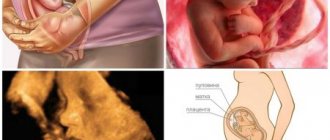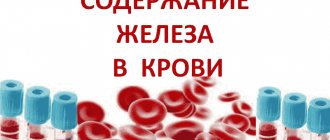D-dimer - what is it?
The use of D-dimer as a test for diagnosing the early stages of a blood clot has been practiced since the 90s of the last century. The method began to be used in practice as one of the main tests that makes it possible to detect conditions predisposing to the formation of blood clots at an early stage in the laboratory. Such a feature of the D-dimer as the appearance of protein compounds after the disintegration of a blood clot was known 20 years before the use of this analysis in practice, but the discovery did not receive practical significance due to the little knowledge of the method.
If previously the determination of D-dimer was available only to specialized clinics, then in modern medicine any medical institution providing assistance for acute pathologies of hemostasis has equipment to implement the technique. Emergency diagnostics carried out at a high level help to begin treatment in a timely manner and save the health and lives of patients.
How is the analysis carried out?
It is necessary to take a D-Dimer test in the morning and on an empty stomach, from a vein. The doctor draws blood into a test tube containing sodium citrate. For a complete picture, you need to donate blood for clotting (coagulogram). The result is ready within a couple of days.
Preparing for analysis:
- It is prohibited to consume alcoholic beverages two days before blood sampling;
- You can’t smoke during the day;
- exclude spicy, fried, salty foods during the day, the last meal around 20.00 in the evening (vegetable salad and broth);
- If you are taking any medications, you need to notify your doctor in advance and he will give recommendations.
Reasons for the appearance of D-dimer
When hemostasis is activated, the process of fibrinolysis begins. Its main catalyst, plasmin, stimulates the breakdown of fibrin and fibrinogen. In addition to the predicted decomposition products - D- and E-fragments, by-products are formed - dimers and trimers.
The appearance of D-dimers in the blood plasma indicates excessively active fibrinolysis. An intensive splitting process indicates an increase in the blood clotting threshold and the accumulation of insoluble fibrin at previous stages. If, during a study of blood plasma, D-dimers are found in it, then there is an increased risk of thrombosis, and immediate measures must be taken to correct hemostasis.
Treatment for high D-dimer levels
If the analysis shows increased D-dimer values during pregnancy, then the woman is immediately sent to the hospital, where she must undergo a course of therapy.
To treat the problem, the following drugs are usually used:
- Fraxiparine. The drug acts as a direct anticoagulant. The drug is injected exclusively subcutaneously into the thigh area or into the abdomen near the navel. The course of treatment with Fraxiparine is seven days. At the same time, doctors constantly monitor changes in the results obtained.
- Reopoliglyukin. The drug must be administered intravenously using a dropper. In order to significantly improve blood flow in the placenta, a solution of Curantil or Actovegin can be additionally administered.
The level of D-dimer during pregnancy must be monitored in order to promptly determine the presence of pathologies associated with blood clotting. This will allow you to avoid many complications in the future with the woman’s health, the development of the child, as well as directly during childbirth.
D-dimer norm, consequences of low and high levels
D-dimer testing is testing the activation of hemostasis at the highest level. The technique is quite complex and is not included in the standard diagnostic kit.
The normal concentration of the marker in the blood plasma of a healthy person is up to 0.5 μg/ml (500 ng/ml), or it is not detected at all, has negative values.
An increase in the level of D-dimer above these indicators is a sign of the development of thrombosis, disseminated intravascular coagulation (DIC), deep vein thrombosis, and pulmonary embolism.
Conditions in which plasma D-dimer levels increase:
- Physiological changes during pregnancy;
- Acute course of the inflammatory process;
- Infectious lesion of any etiology;
- Oncological disease;
- Consequences of thrombolytic therapy;
- Diseases leading to damage to the liver parenchyma;
- Thrombophilia during pregnancy or infertility;
- Ischemia, myocardial infarction;
- Large area hematomas, significant injuries;
- Surgical interventions;
- Elderly age.
In 2% of cases when D-dimer values are significantly lower than normal with signs of thrombosis, it is necessary to find out the reason for the paradoxical results.
Reasons for low values:
- Minimum sizes of blood clots;
- Long-term exposure of material for testing (more than 6 hours) in laboratory containers;
- Delayed testing;
- Plasminogen deficiency or excessively high concentration of plasminogen activation inhibitor.
Using a study of the level of D-dimers, it is possible to assess the degree of risk of developing thrombosis, disseminated intravascular coagulation syndrome, and track the dynamics of therapy for hemostasis pathologies. Despite the accuracy and information content of the technique, you do not need to wait for its results to start anticoagulant treatment. Therapy is carried out based on the clinical picture of the disease, without wasting time.
A study of the level of D-dimers is carried out if there is an increased risk of developing cardiovascular diseases (ischemia), or if pathological processes in the hemostatic system are suspected.
Indications for determination
If the doctor ordered such a test, this means that he suspected a certain disease, and you should not hesitate to carry it out.
The main indications for determining the concentration of D-dimer are:
- Early diagnosis of thrombotic conditions.
- Diagnosis of deep vein thrombi of the extremities (used as an additional method to exclude other diagnoses).
- Pulmonary embolism.
- Intravascular coagulation syndrome (disseminated intravascular coagulation - DIC syndrome).
- Pregnancy complicated by severe gestosis and edema.
- Control over the prescription of thrombolytic agents.
- Tumors of the ovaries and breast (D-dimer is increased due to excessive estrogen action).
In some cases, this test is prescribed for developed renal and liver failure, myocardial infarction, and severe inflammatory diseases. It is mandatory to determine this indicator during therapy with tissue plasminogen activator and during the treatment of coagulopathies.
D-dimer during pregnancy
When managing pregnancy, determining the level of fibrinogen in the blood plasma is of great importance. The closer the due date, the higher these indicators. It should be taken into account that an excessive increase in fibrinogen levels does not always fit into the normal range; sometimes it is a sign of deep vein thrombosis.
Before childbirth and directly during childbirth, it reaches its maximum level, after 3 days it rapidly declines, and after 30-35 days it reaches standard values.
Table: D-dimer norm by days of pregnancy:
| Gestational age | Normal D-dimer values by week of pregnancy in ng/ml | µg FEU/ml |
| Up to 13 weeks | Up to 280 | Up to 0.56 |
| 13 – 20 weeks | 100 — 700 | 0,2 – 1,4 |
| 21-28 weeks | 150 — 850 | 0,3 – 1,7 |
| 29 – 35 weeks | 150 — 1500 | 0,3 – 3,0 |
| From 36 weeks until birth | 200 — 1550 | 0,4 – 3,1 |
1 µg FEU/ml = 500 ng/ml
In accordance with the data in the table, we can conclude that during pregnancy, the concentration of the marker increases with increasing gestational age. Deciphering its meanings will help prevent pathologies of pregnancy and childbirth, and supplement the information obtained from traditional analysis of coagulogram results.
Normal indicators
The risk of thrombosis is identified by determining D Dimer in the blood. The results are deciphered mainly together with the hemostasiogram.
In a pregnant woman, as the fetus grows and develops, this indicator increases. This is due to physiological changes in the body.
Acceptable norms of D Dimer are not strictly prescribed; doctors look at the general indicator and the condition of the woman in labor:
- 1st trimester – increases 1.5 times than it was before pregnancy.
- 2nd trimester – increases 2 times.
- 3rd trimester - becomes 3 times larger than the previous one.
Normal D Dimer values during gestation by week:
Norms by trimester:
Changes in the hemostatic system during pregnancy, why check D-Dimer
With the onset of pregnancy, a woman’s body undergoes enormous changes, which are often not even visible from the outside. Already from the first days, the hormonal background is transformed, but not only it, but also the overall composition of the blood will have to change (as we know, its volume will also increase over time). All this is subordinated to one goal - organizing successful pregnancy and delivery. The hemostasis (blood coagulation) system is transformed to avoid blood loss during the upcoming birth, the shift occurs gradually, towards increasing coagulation abilities, and the process begins in the first months of pregnancy.
The fact that, during pregnancy, certain changes normally occur that are not visible to the eye, but can affect the course of pregnancy and childbirth in emergency cases, makes modern medicine directly obligated to monitor the process. After all, no matter how individually the changes occurred (and the process has such a tendency), in practice there were situations where the process deviated from the norm, which in practice led to negative consequences for pregnancy and even the life and health of the mother and child (thromboembolism, uncontrolled bleeding during pregnancy and childbirth with tragic outcomes).
So, changes in hemostasis require medical supervision. Observation takes place through regular (normally - twice during the entire pregnancy) examination of the system through a blood test - a coagulogram (hemostasiogram). This study has a large number of indicators - this is both a “standard” set and an expanded list of parameters (for an in-depth study of the situation). The group of advanced parameters includes D-Dimer.
What is D-Dimer
D-Dimer itself is a substance (protein) formed as a result of the work of anti-clotting factors. The process of its formation in the blood in a simplified form can be described as follows:
- As a result of the work of blood clotting factors, fibrin is formed from fibrinogen (relatively, threads that link platelets together to form a blood clot).
- Simultaneously with the beginning of fibrin formation, anti-clotting factors come into play, which, if there is no need for it (excess, waste), fibrin is destroyed (thrombolysis begins under the influence of the plasmin protein).
- As a result of the breakdown of fibrin, several substances are formed, among which is D-Dimer (the amount of this particular substance makes it possible to more conveniently and accurately obtain information about the processes in the hemostatic system).
Thus, the amount of D-Dimer in the blood tells us about the quantitative characteristics of the processes of blood coagulation and lysis (disintegration of coagulating elements).
D-Dimer is a breakdown product of fibrin (a protein that binds platelets into a blood clot)
However, everything is not so simple as to judge this only on the basis of one indicator (a combination of several at once is needed) - it is not for nothing that the coagulogram is represented by many parameters, and D-Dimer is not included in the standard list, it serves only as a more advanced marker.
The famous obstetrician-gynecologist E.P. Berezovskaya has a somewhat radical view on the determination of D-Dimer in pregnant women. Justifying the uselessness of D-Dimer analysis, she relies on the naturalness of the processes of increasing blood coagulation factors and the lack of clear standards for their increase for pregnant women. To identify pathologies, she suggests using other methods: analysis of the pregnant woman’s medical history, genetic factors, etc.
Deviations from the norm: increased, decreased level
Elevated D-Dimer values are most common among pregnant women. Multiple excesses of the norm may indicate:
- thromboembolism (blockage of blood vessels with blood clots) or thrombophilia (high risk);
- DIC syndrome - discoordination of the blood coagulation system, multiple formation of clots (the condition requires emergency medical care);
- severe injury accompanied by bleeding.
A moderate excess of D-Dimer standards in combination with characteristic results for other indicators may indicate:
- diabetes mellitus, including gestational (typical only for pregnant women);
- gestosis - up to the most serious forms - preeclampsia and eclampsia);
- varicose veins;
- liver or kidney pathologies;
- acute infectious process in the body.
For all of the listed conditions, the result of an analysis of the D-Dimer level serves only as a sign, which means that it is not the D-Dimer that should be affected, but the disease itself. Increased blood clotting, as a symptom, is reduced with anticoagulant drugs (Fraxiparin, Fragmin, Curantil, Actovegin, Reopoliglyukin).
The consequences of any of the above diseases for a woman and baby can be very serious - from placental abruption, the threat of termination of pregnancy to death.
Low D-Dimer values are much less common than high ones; in most cases this is a consequence of natural processes.
But sometimes such analysis results indicate weak blood clotting abilities (possible anemia, vitamin K deficiency, liver cancer, incorrectly selected doses of anticoagulants) and threaten blood loss during pregnancy, and especially during childbirth. The problem is solved after identifying the cause, depending on its nature, it can be:
- replenishment of vitamin deficiencies;
- adjustment of drug doses;
- platelet transfusion from a donor;
- cancer therapy.
Prevention measures
During pregnancy, doctors recommend that expectant mothers with elevated D-dimer follow a list of rules that can help reduce the risk of negative consequences.
The rules are simple but effective:
- Drinking large amounts of fluid: to naturally thin the blood and prevent blood clots.
- Performing physical therapy designed specifically for pregnant women, or doing yoga or aqua aerobics.
- Walks in the open air.
- Proper distribution of work and rest.
- Reducing the consumption of fatty foods, baked goods and sweets.
- Adding the required amount of vegetables and fruits to the diet.
- Get a healthy night's sleep at least 8 hours a day.
- Regular visits to your doctor to undergo the necessary tests and examinations.
At the stage of pregnancy planning, a consultation with a geneticist will be required if the woman has close relatives with abnormalities in the functioning of the hemostatic system or had previous frozen pregnancies at an early stage (8-9 weeks of gestation). These expectant mothers have an increased risk of thrombosis. Early diagnosis of high marker values will eliminate the threat of complications during or after childbirth.
Experts say that the best prevention of problems during pregnancy is proper planning. Doctors recommend drinking a herbal complex based on Altai herbs in advance for easy conception and successful pregnancy - Seraphim’s Collection. The product has a minimum of contraindications, gently prepares the body for changes in status, and cures old chronic infections.
Dr. Berezovskaya talks about tests during pregnancy:
Treatment
In some cases, an increase in D-dimer requires certain medical intervention (the exception is uncomplicated pregnancy and the elderly patient). The conditions either resolve on their own or are subject to long-term observation.
In the case where a pathological process occurs and the D-dimer is elevated, treatment should be started immediately. It is usually carried out in the intensive care unit (in some cases in a specialized cardiology hospital).
If thromboembolism is suspected (shortness of breath, hemoptysis, heaviness and chest pain), thrombolytic therapy should be started immediately. Such drugs as “Streptokinase”, “Alteplase”, “Tenectoplase” will be used.
If liver failure occurs, dialysis is recommended to promptly remove metabolic products.
In case of tumor processes (if they are operable), the D-dimer level will return to normal as tumor growth is suppressed (tumor removal or chemotherapy).
D-dimers
- These are breakdown products of fibrin, which is part of the blood clot.
An analysis for D-dimers should be taken during pregnancy without fail, because Based on this, the treating doctor can judge whether there is an increased risk of blood clots.
information
Determination of fibrin breakdown products is carried out by taking blood from a vein. Before the test, the patient must not drink or eat for at least 12 hours.











